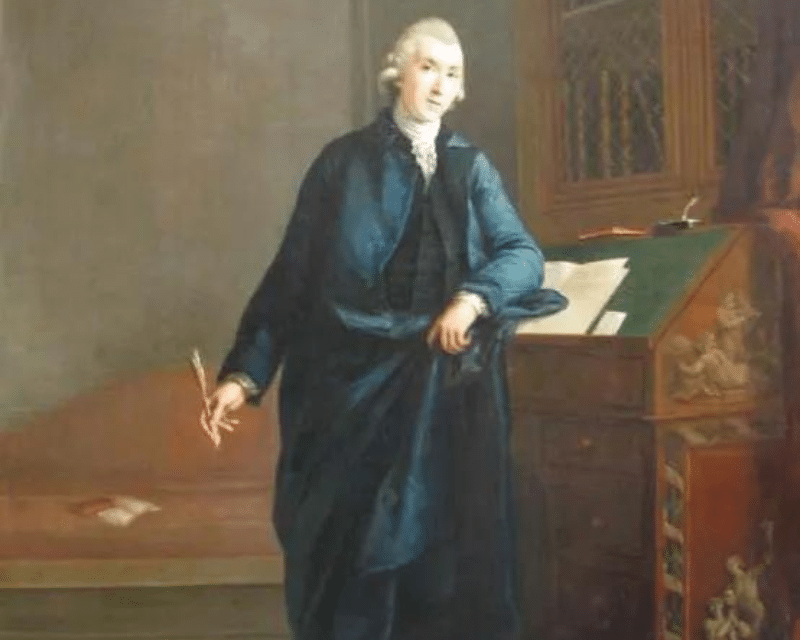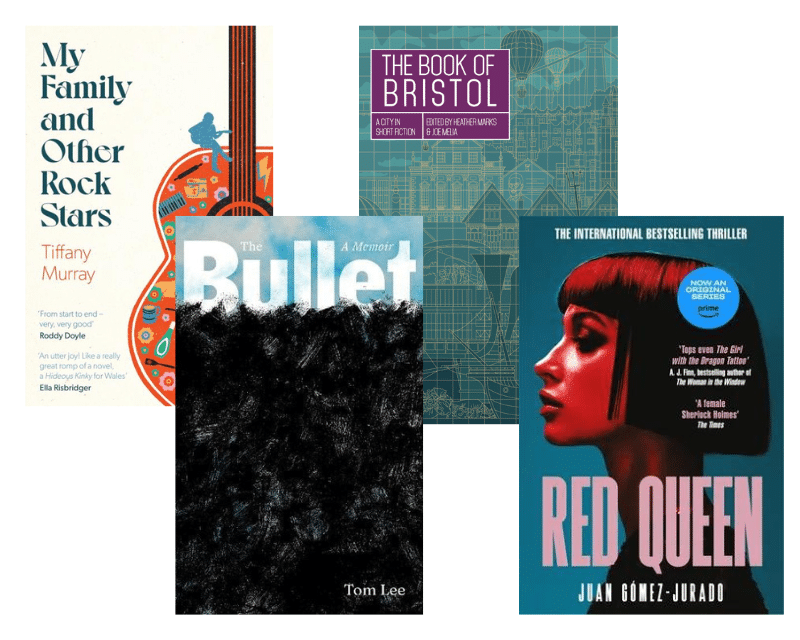- Collected
- Article
Fears Old And New
Writing horror

- 28 October, 2019
- Mark Morris
Although I’ve written other things, I’m proud to call myself a horror writer. I say that knowing the genre is much maligned, and looked down upon by the ‘literati’. Having worked within the genre for the past thirty years, and been a reader of it for much longer, I’m fully aware of what an inventive, wide-ranging genre it is, the best of its fiction as insightful and well-written as anything to be found in mainstream fiction.
Although I could spend this entire article listing brilliant horror novels and urging you to read them, I have always maintained that the lifeblood of the genre is its short fiction. As a child of the seventies I grew up devouring anthologies of horror, ghost and science fiction stories. One of my most profound reading experiences took place on New Year’s Eve 1975 when I was twelve years old. At the time we lived in a newly built cul-de-sac in a rural part of Huddersfield. On this particular night my sister and I were spending the evening with some friends of ours who lived across the road. Both sets of parents were at a party in a neighbour’s house, and we kids had been left with crisps, pop, board games and the TV.
The four of us saw in the New Year, then headed off to bed. I was sleeping in a room at the front of the house, which, as I recall, was some kind of box room or study. A camp bed had been set up in the corner, and there was quite a bit of clutter about — boxes, some clothes hanging up, some stacked items of furniture.
I had a book with me, The Eleventh Pan Book of Horror Stories, which I’d bought off a school friend for 20p. I’m not sure how many of the stories I read that night, but when I turned off the bedside lamp with the intention of getting some sleep, it must have been well into the early hours of January 1st 1976.
Thanks to the stories, though, which were still swirling about in my head, I found sleep extremely hard to come by. As soon as I closed my eyes, I imagined I could hear rustling sounds in the darkness; imagined terrible, unknown things creeping towards my bed.
I told myself there was nothing there, that it was all in my mind. But time and again, overcome by dread, I would feel compelled to open my eyes and look around.
And every time I did, there would be something there. A man standing by the wardrobe. A shapeless mass crouched beneath the windowsill. Fighting down panic, I would snap on the bedside lamp, whereupon the man would be revealed as nothing but a coat on a hanger, the crouching figure a heap of boxes or books.
How long this went on for, I can’t recall, but I do remember watching it getting light; I remember the dawn seeping in through the curtains, slowly draining the sense of mystery and threat from the objects in the room.
It was a horrible night, traumatic and exhausting. And yet, with the benefit of hindsight, I now recall that New Year’s Eve with a thrill of excitement, even with fondness.
Why?
Well, first of all, simply because it’s memorable. So many New Year’s Eves from my past have faded into obscurity, but this one still stands out, vivid and alive, some forty-odd years later.
Secondly, I remember it because the fiction I read that night transported me. Okay, so some of the stories were not among the best ever written, but they were good enough, and powerful enough, for a twelve year-old boy to become utterly lost in them for a few hours.
And thirdly, I survived. I was a terrified young boy – even though I had brought this upon myself – who had begun to think that the night would never end. Yet eventually, simply by enduring the experience, I got through it. The sun came up; the darkness receded; the monsters went away.
And thus a terrifying experience instantly became an exhilarating one.
The Eleventh Pan Book of Horror Stories was the first adult anthology I ever read, and although the aftermath of the experience was traumatic, it certainly didn’t put me off reading horror fiction. Indeed, over the next few years, I ploughed through dozens of volumes of the Pan and Fontana books of horror and ghost stories, where, among the more gruesome and exploitative modern tales, could be found classic offerings by such masters as M. R. James, Robert Aickman, Algernon Blackwood, Nigel Kneale, Roald Dahl, Ray Bradbury, Elizabeth Bowen, Joan Aiken and many others.
By the time I became a professional writer myself, in the late eighties, I’d read most of the genre’s acknowledged classic short stories – ‘The Monkey’s Paw’ by W. W. Jacobs, ‘The Willows’ by Algernon Blackwood, ‘The Signal-Man’ by Charles Dickens, ‘Oh, Whistle, and I’ll Come to You, My Lad’ by M. R. James, ‘Three Miles Up’ by Elizabeth Jane Howard, ‘Green Tea’ by J. Sheridan Le Fanu, ‘The Beckoning Fair One’ by Oliver Onions, and… oh, many, many more – and I’d moved on to anthologies and collections by more modern masters of the genre, a few examples of which were Dark Voices edited by Kirby McCauley (1980), the New Terrors Omnibus edited by Ramsey Campbell (1985), Cutting Edge edited by Dennis Etchison (1986), and single author collections such as Night Shift by Stephen King (1978), Dark Companions by Ramsey Campbell (1982), and Clive Barker’s groundbreaking six-volume short story collection the Books of Blood (1984–85).
By this time, though, annual non-themed horror anthologies had become a dying breed (the print run and sales for The 30th (and final) Pan Book of Horror Stories, released in 1989, were pitiful compared to those for the early volumes in the series, as a consequence of which, ironically, secondhand copies can now command upwards of £70 online), and even one-off non-themed horror anthologies were being phased out in favour of anthologies with a more obvious ‘hook’, be that vampires (Blood is Not Enough), zombies (The Living Dead), buildings (The Architecture of Fear), the underground (The End of the Line) or Lovecraftian horrors (Black Wings of Cthulhu).
Now, there are some fine themed anthologies out there, but what I loved as an adolescent/teenager whenever I read a horror anthology was the fearful anticipation of not knowing what kind of story would be coming up next. Would the next tale be scary, funny, baffling? Would it contain witchcraft, a haunting, cannibals, demonic possession? Or would it be something stranger, darker, altogether more difficult to define?
When I was finally offered the opportunity, therefore, to achieve my long-held ambition of editing an anthology of my own, the project I pitched to the publisher was exactly the kind of thing I – and countless others of my generation – had grown up with. I didn’t want to edit a single anthology, but a series; I wanted to be editor of an annual, non-themed horror anthology of original stories, which would showcase the very best fiction that the genre had to offer.
New Fears, the anthology I edited for Titan Books, which was released in 2017 and went on to win the British Fantasy Award for Best Anthology the following year, achieved all of my objectives. I strongly believe that the parameters of the horror genre are incredibly wide, indeed almost limitless, and, thanks to my brilliant contributors, the stories in New Fears and its follow-up volume New Fears 2 illustrate that belief perfectly. Within the two books are a dizzyingly eclectic mix of styles and approaches. There are stories that explore ancient myths in new and innovative ways; stories of human evil; stories of unnamed and ambiguous terrors; stories where the numinous and the inexplicable intrude upon what we perceive to be reality in unexpected ways; stories which may not at first seem like horror stories at all, but which nevertheless leave the reader with the uncomfortable notion that there is something askew, off-kilter, not quite right with the world.
The best horror fiction deals, as all good fiction does, with life’s big themes: existential angst; alienation; loneliness; fear; grief; madness; joy; hope; faith and doubt. A good horror story will make you question not only your place in the world, but the nature of reality itself. It will shine light on the darkness, and perhaps even provide you with insight and understanding. It may even achieve the dual objective, as it did for me on New Year’s Eve 1975, of teaching you to fear the darkness whilst simultaneously encouraging you to appreciate and embrace the light.
You might also like:
The Life and Times of Reverend David Williams
As we get ready to celebrate our 234th anniversary on 18 May, a recent RLF grant beneficiary takes a deep…
Anywhere But a Room of One’s Own
I am a writer looking to be re-homed. All I need is a laptop, a table and a chair, and…
RLF Fellows’ News: May 2024
Publishing RLF Fellow Tom Lee’s new book, The Bullet, his memoir about family and mental health, has recently been published…


